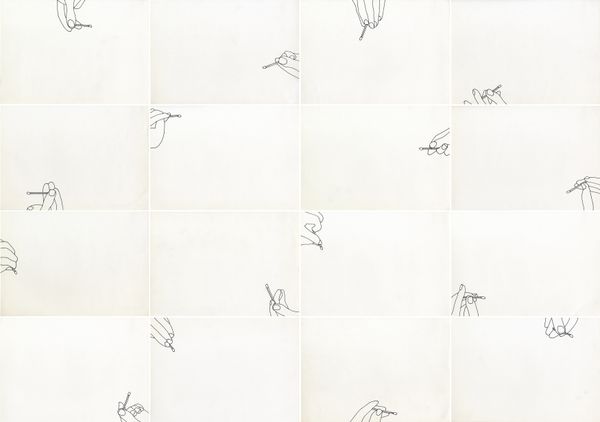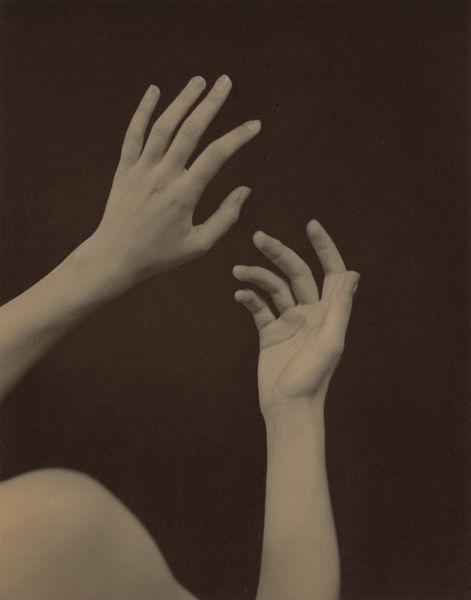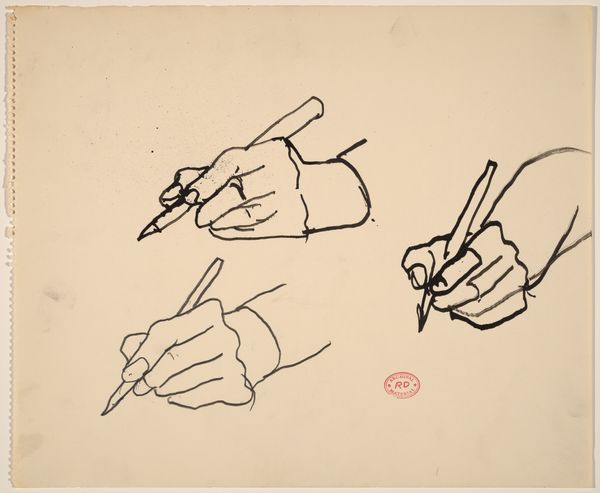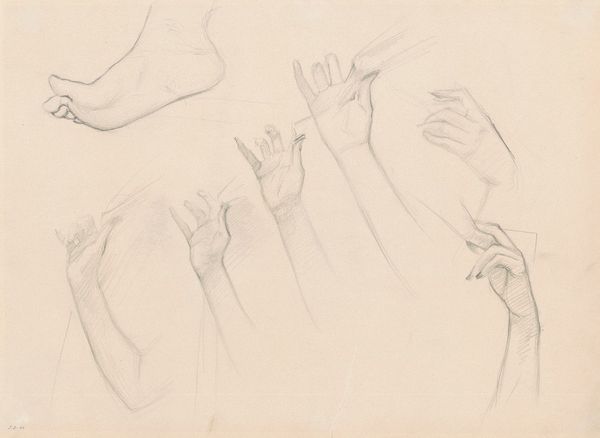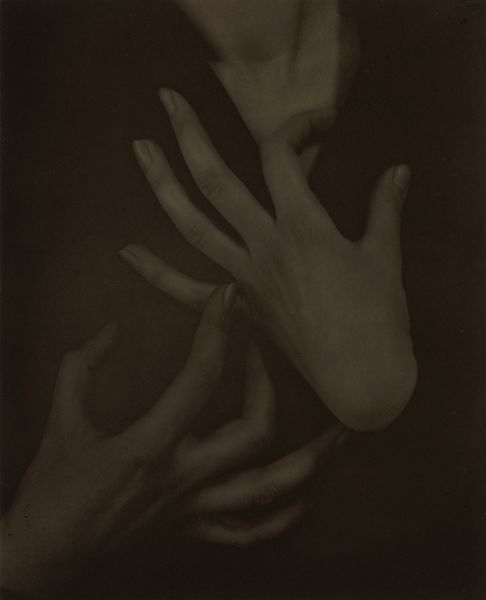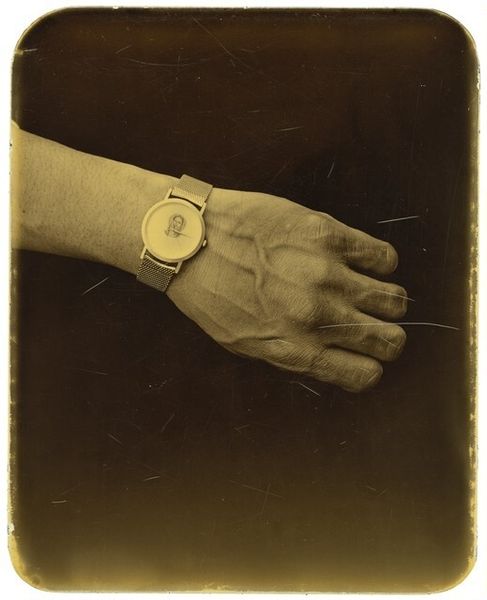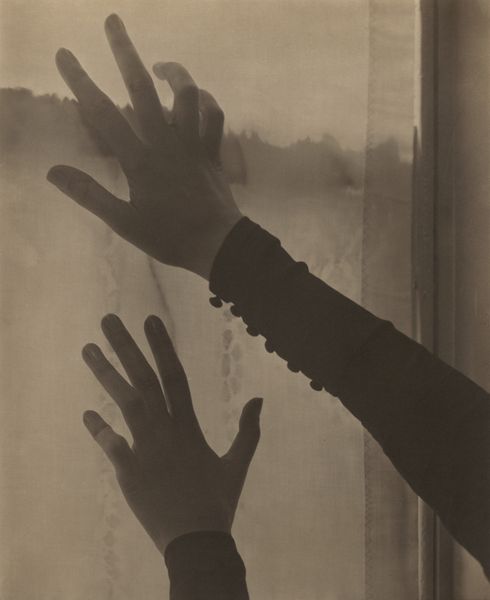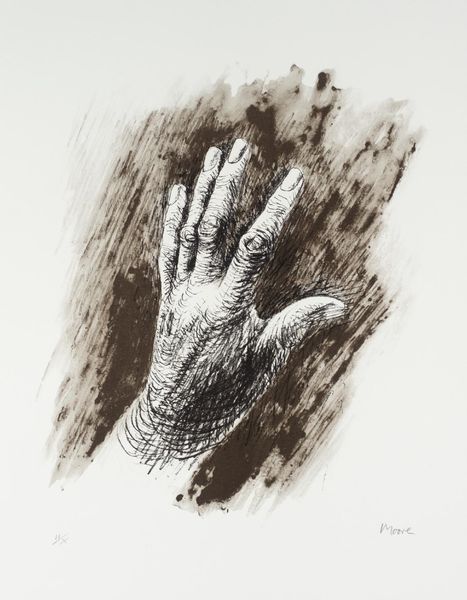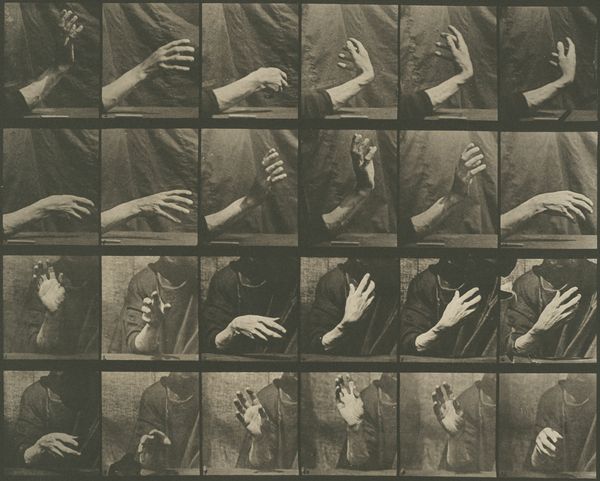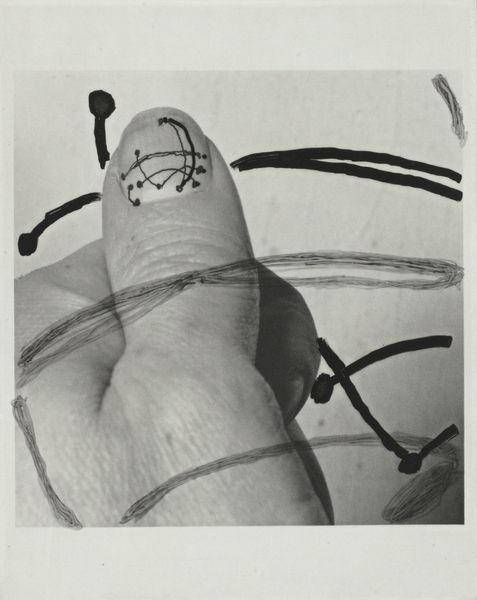
drawing, performance, graphite
#
drawing
#
contemporary
#
performance
#
conceptual-art
#
sculpture
#
body-art
#
abstraction
#
graphite
#
modernism
#
arm
Copyright: Helena Almeida,Fair Use
Curator: Helena Almeida's "Inhabited Drawing," created in 1976, presents a sequence of photographic panels. The stark contrast and repetitive gestures immediately create a sense of unease. What do you make of it? Editor: It's eerie, isn't it? Like a glitch in reality. The grayscale adds to this sterile, almost clinical feel. Hands, arms, graphite... disconnected and floating, trapped in some sort of Sisyphean drawing loop. Curator: Absolutely. Almeida’s work frequently blurred the boundaries between performance, photography and drawing, examining the artist's relationship to her work. The hand holding the pencil appears to trace and erase itself, literally drawing attention to the act of creation. It invites analysis of art making process and how creative production occurs. Editor: It’s clever how she used her own body, specifically her arm, as both subject and tool. The graphite mark extends the reach of her hand; a literal and metaphoric extension. There is tension between creation and disappearance, isn't there? Like something is building while it’s also fading. I love how cyclical that is! Curator: I agree. It can be interpreted as a reflection on the labor inherent in artistic practice, and the commercial realities or personal motivations pushing it. Consider the time required to pose for and produce twelve variations within this grid-like arrangement. It encourages close looking and slow recognition of artistic means. Editor: It is also kind of playful, despite the sterility I mentioned earlier. She’s toying with perception. It feels both serious and like some kind of private joke she's sharing with us. It has a silent witty voice. Curator: Yes, the piece operates on multiple levels. As a critique of the art-making process but with a quiet sense of humor regarding the absurd nature of the same. What began as photography moves closer to sculpture with the body becoming a material. Editor: Seeing it that way makes the repetitive action more palpable for me, even slightly meditative. Like a strange choreography captured in stills. Curator: I hadn’t considered it choreographic but, that adds another rich dimension to our understanding! Editor: Well, what else is art but an extended choreography of perception? Curator: That gives me much to think about as I leave the exhibit, the implications of the act of observing in connection with material practice. Editor: Yes! A dance for the eye and the mind, haunted by our touch and intellect! I see new meanings here that will linger after leaving the gallery.
Comments
No comments
Be the first to comment and join the conversation on the ultimate creative platform.
